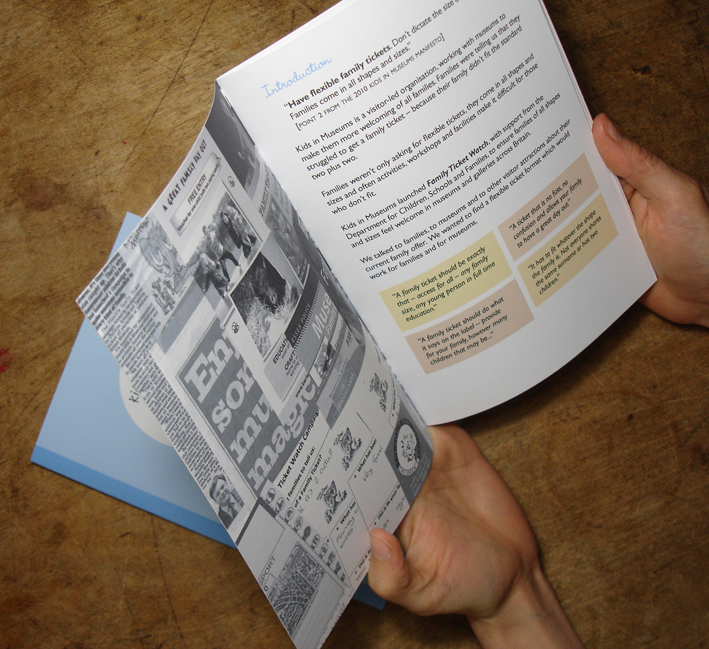Download our 2010 guide to family flexible ticketing in in the link at the bottom of this page. These guidelines were created in response to our 2010 Kids in Museums research study.
Family ticketing in 2020
Created by University of Leicester placement students, Anastasia Skarou, Xingchen Tan and Xuewen Gao.
Ten years ago, Kids in Museums published our Family Ticket Watch Report, a review of the museum ticket options available for families.
A good Family Ticket is essential to being a family friendly museum. Family tickets need to reflect the shapes and sizes of families that visit museums. There are many families that don’t fit into the traditional idea of two adults and two children and they need to feel they can buy a ticket for their family when they visit.
Top tips
- Shout about it: if you’re free or have a great family ticket offer, let people know.
- Keep your pricing clear and simple.
- Be good value for money.
- Remember families come in all shapes and sizes.
- Keep things clear and easy to implement for your staff.
The COVID-19 effect
Although research shows that price isn’t the only barrier to family visits to museums, the economic impact on COVID-19 means that families will be thinking more about their budgets and value for money when they go out. This was recently highlighted by an article in The Guardian about how single parent families felt about returning to visitor attractions.
In their most recent Living Standards Audit, the Resolution Foundation estimated that typical non-pensioner household income ‘fell by 4.5 per cent in real terms between 2019-20 and May 2020’. This makes COVID-19 one of the most severe economic shocks to families since the 1970s. This is likely to continue into the winter as unemployment rises.
ALVA research shows that families are among the groups most confident about returning to museums. Against this background, it’s worth revisiting the recommendations from Family Ticket Watch and thinking about how they apply in 2020.
Some museums, such as We The Curious, have used lockdown as an opportunity to think about how they can make their ticketing more accessible. As others started to reopen over the summer, we saw some great free offers for families. Child tickets were free at the Cutty Sark during August to encourage families to return and a message about free tickets was front and centre on the Natural History Museum website.
However, if you’re museum isn’t free, it doesn’t mean families will see you as less welcoming. A 2019 article by Colleen Dilenschneider reviews the evidence based on US data and shows that being free and being welcoming are not the same thing.
Changing demographics
Over the past decade, the number of families with only one child has been increasing. According to the latest data, nearly half of all families in England and Wales had only one child.
There are around 1.8 million single parent families in the UK. This means about 23% of all families with dependent children have only one parent. More than half of single parent families only have one child. It’s also worth considering that nearly half of single parent families are living in poverty.
Given these trends, consider introducing the following more inclusive options:
- Family tickets that offer the option for one adult plus children, such as those offered by English Heritage.
- Offering a range of tickets for families of different sizes, such as those at the Black Country Living Museum.
- Family tickets that offer the option of up to two or three children are generally not good value for families with only one child.
As with our initial report, family tickets that offer a year of admission are a great incentive to both encourage repeat visits and show families that your tickets represent value for money. Kiplin Hall and Gardens used the opportunity of reopening after lockdown to rethink their ticketing and introduce an annual ticket. As a result they have seen more families visiting and repeat family visits. The proportion of family visitors in their audience has grown from 17% to 60%. You can find out more about their experiences in this AIM case study.
There are around 200,000 kinship carers in the UK, about half of which are grandparents. Age UK research shows that around 40% of grandparents do regular childcare (prior to COVID-19 restrictions). While many museums offer discounted tickets for older people, there are fewer options for grandparents and their children, such as this example from Weald and Downland Museum. Given the number of grandparents involved in childcare, this could be an option for more museums to consider.
When considering family tickets, it’s also worth thinking about the age covered by your child tickets and young person tickets and how this aligns with the age young people can visit without being accompanied by an adult. We know from looking at museums across the country that different organisations allow independent visits at different ages from 13 upwards. This is a complex area and we hope to provide some detailed guidance and case studies in the future. However, if you are charging young people for an adult price ticket, it seems fair that they should have the same visitor experience as an adult and be able to visit independently.
As a final thought, the fastest growing family type in England and Wales is a family with two parents of the same sex. The number of same-sex couple families has grown by more than 50% since 2015. While this does not impact on ticketing, it’s worth considering about whether a family with same sex parents would feel welcome at your family activities.
To see our full 2010 guidance on family ticketing, click the download link below.
You can also find the full 2010 Family Ticket Watch Report as a resource on our website.
Files for this Resource
Tags: Advocacy, Research, Ticketing, Welsh Language
Categories: Accessibility
Audience: Family

